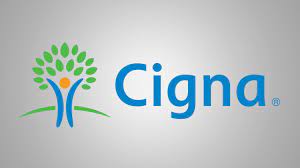Cigna Group Falls Under the False Claims Axe and Pays Over $172 Million for Abuse of Medicare Advantage Program

As if corporate healthcare businesses needed an enforcement reminder, DOJ recently announced a settlement with Cigna Group for $172 million to resolve claims that Cigna exaggerated patient illnesses to extract more money from the Medicare Advantage Program.
Under the Medicare Advantage (MA) Program, also known as Medicare Part C, Medicare beneficiaries have the option of obtaining their Medicare-covered benefits through private insurance plans called MA Plans. The Centers for Medicare and Medicaid Services (CMS) pays the MA Plans a fixed monthly amount for each beneficiary who enrolls. CMS adjusts these monthly payments to account for various “risk” factors that affect expected health expenditures for the beneficiary, to ensure that MA Plans are paid more for those beneficiaries expected to incur higher healthcare costs and less for healthier beneficiaries expected to incur lower costs. To make these adjustments, CMS collects “risk adjustment” data, including medical diagnosis codes, from the MA Plans.
Cigna owns and operates MA Organizations that offer MA Plans to beneficiaries across the country. The United States alleged that Cigna submitted inaccurate and untruthful patient diagnosis data to CMS in order to inflate the payments it received from CMS, failed to withdraw the inaccurate and untruthful diagnosis data and repay CMS, and falsely certified in writing to CMS that the data was accurate and truthful. The settlement announced today resolves these allegations.

DOJ’s settlement resolves three cases against Cigna tied to the Medicare Advantage billing misconduct. Cigna submitted false claims and falsely certified that the data it submitted was accurate.
The first set of claims related to chart reviews of medical records that Cigna received from providers when they submit diagnosis codes to Medicare, which pays Medicare Advantage plans a fixed monthly fee for beneficiaries that are adjusted depending on applicable risk factors.
According to the settlement, Cigna inspected the chart reviews to identify additional codes that the providers did not include to increase the amount of reimbursement. In the process, Cigna did not delete any erroneous codes it identified where the impact would have required Cigna to reimburse the government.
To resolve the chart reviews claims, Cigna agreed to pay nearly $116 million, half of which constituted restitution.

The second set of claims related to false diagnosis codes used by Cigna to support claims for morbid obesity. Cigna agreed to pay $19.5 million, half of which constituted restitution.
The third set of claims stemmed from Cigna’s “360 Program,” under which contracted nurse practitioners performed health examinations inside patients’ homes and exaggerated the seriousness of patients’ health conditions. Based on these false examinations, Cigna obtained “tens of millions of dollars in risk adjustment payments” for tens of thousands patients based on inaccurate and unreliable diagnoses.
The nurse practitioners who conducted these home visits did not perform or order the diagnostic testing or imaging that would have been necessary to reliably diagnose the serious, complex conditions reported, and were in many cases prohibited by Cigna from providing any treatment during the home visits for the medical conditions they purportedly found. The diagnoses at issue were not supported by the information documented on the forms completed by the vendors and were not reported to Cigna by any other healthcare provider who saw the patient during the year in which the home visit occurred. Nevertheless, Cigna submitted these diagnoses to CMS to claim increased payments, and falsely certified each year that the diagnosis data it submitted was “accurate, complete, and truthful.”

To resolve these claims, Cigna agreed to pay $37 million, half of which constituted restitution.
As part of the settlement, Cigna agreed to enter a five-year corporate integrity agreement with the Office of Inspector General of the U.S. Department of Health and Human Services.















